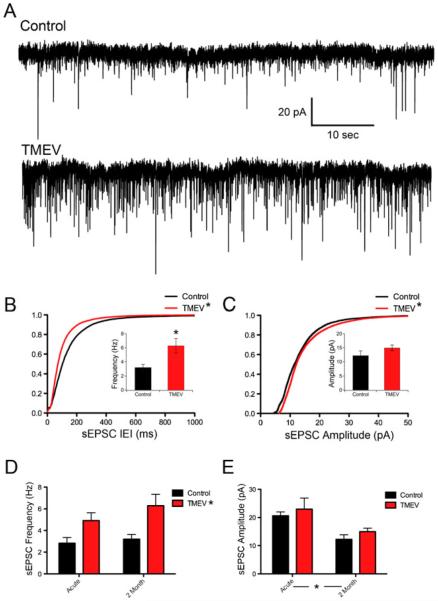Fig. 3.
Frequency and amplitude of sEPSCs remain enhanced in CA3 neurons 2 months following TMEV clearance. a Recordings of sEPSCs from CA3 neurons from control and TMEV-injected animals. b Cumulative distributions of IEIs showing a leftward shift of the experimental distribution indicating a higher frequency of events (KS test, p<0.0001), which is accompanied by an increase in average frequency (inset; control, 3.20±0.44 Hz, N=8; TMEV, 6.30±1.02 Hz, N=9; t test, p=0.018). c Cumulative distributions of sEPSC amplitudes with a shift toward larger sEPSC amplitudes in the TMEV infected mouse (KS test, p<0.0001), which is not accompanied by a significant increase in average amplitude (inset; control, 12.24± 1.65 pA, N=8; TMEV, 14.98±1.23 pA, N=9; t test, p=0.197). d Results of a 2 way ANOVA revealing an overall effect of TMEV injection (p=0.0015) but not time (p=0.248) for sEPSC frequency. e Results of a 2 way ANOVA revealing no overall effect on sEPSC amplitude of TMEV injection (p=0.319). An overall effect for time was observed (p=0.0028)

